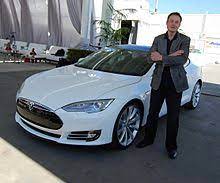Decoding Ford’s 48-Volt EV Architecture Guide: A Game-Changer in Automotive Innovation

Introduction
In a groundbreaking move, Ford CEO Jim Farley expressed gratitude towards Tesla’s Elon Musk for sharing the 48-Volt EV Architecture Guide. This unexpected collaboration between two automotive giants is poised to revolutionize the electric vehicle (EV) landscape.
Understanding Ford’s 48-Volt EV Architecture
1. Unraveling the Technological Marvel
Ford’s 48-Volt EV Architecture represents a leap forward in automotive engineering. The integration of a 48-volt electrical system offers a host of advantages, including enhanced fuel efficiency, reduced emissions, and improved overall vehicle performance.
2. Efficiency Redefined
2.1. Power Distribution
The 48-volt system optimizes power distribution within the vehicle, ensuring that energy is utilized with utmost efficiency. This translates to a more eco-friendly and cost-effective driving experience.
2.2. Regenerative Braking
One standout feature is the incorporation of regenerative braking, where the kinetic energy during braking is converted back into electrical energy, further extending the vehicle’s range.
Ford’s Strategic Acknowledgment of Tesla’s Influence
Ford’s acknowledgment of Elon Musk’s role in sharing the architecture guide emphasizes the collaborative spirit in the automotive industry. This move not only showcases a commitment to innovation but also sets a precedent for knowledge-sharing among industry leaders.
Implications for the Future
1. Transforming the EV Landscape
Ford’s adoption of the 48-volt system is a clear indicator of the industry’s shift towards sustainable and efficient electric mobility. This move positions Ford as a frontrunner in the race for automotive innovation.
2. Potential Market Impact
2.1. Competitive Edge
By embracing Tesla’s insights, Ford gains a competitive edge in the EV market. The 48-volt architecture places Ford at the forefront of technological advancements, appealing to environmentally conscious consumers.
2.2. Industry Collaboration
The collaboration between Ford and Tesla signifies a new era of industry collaboration, where shared knowledge accelerates progress. This cooperative mindset is crucial for addressing global challenges related to climate change and sustainable transportation










